SPAIN
CHANGING THE ALL-AGAINST-FIRE MANTRA
BY JOSÉ ALMODOVAR
Between 1988 and 1996, the slogan “All Against Fire” became famous in Spain. During those years , a large number of wildfire managers – many still in service – were instructed to consider fire to be a negative disturbance. This perception existed not only at the street level but was also taught at the university level, in programs such as forest engineering. Changing this paradigm, both at a public and technical level, was not easy and still the All Against Fire mantra is deeply rooted in some Spanish areas.
For many years, farmers and ranchers have carried out burning, especially in the northwest of the country and the Cantabrian coast. However, it was not until the beginning of the 1990s that the first burning plans came to light with the aim to solve the wildfires that non-planned burnings were creating. The “prescribed burning” concept came later, and it was not until the beginning of the 21st century that prescribed burning became popular. Prescribed burns have helped advance planning, technification and fire-impact monitoring, in addition to becoming essential to managing the ground fuels in forested areas Since the end of the 20th century, thanks to the great disseminating work of José Antonio Vega from Galicia, Domingo Molina from Catalonia, and Francisco Rodríguez y Silva from Andalusia, managers learned that fire should be considered a tool for fire prevention and suppression. By that time, anyone who wanted training had to go to North America. However, in 2006, we had the chance to be trained in Spain, thanks to the Lleida University and the Gran Canaria Council prescribed burning courses. Those led to the progressive implementation of prescribed burn techniques at a national level. The training allowed managers to apply prescribed burning activities at a local scale and, at the same time, to train our local crews.
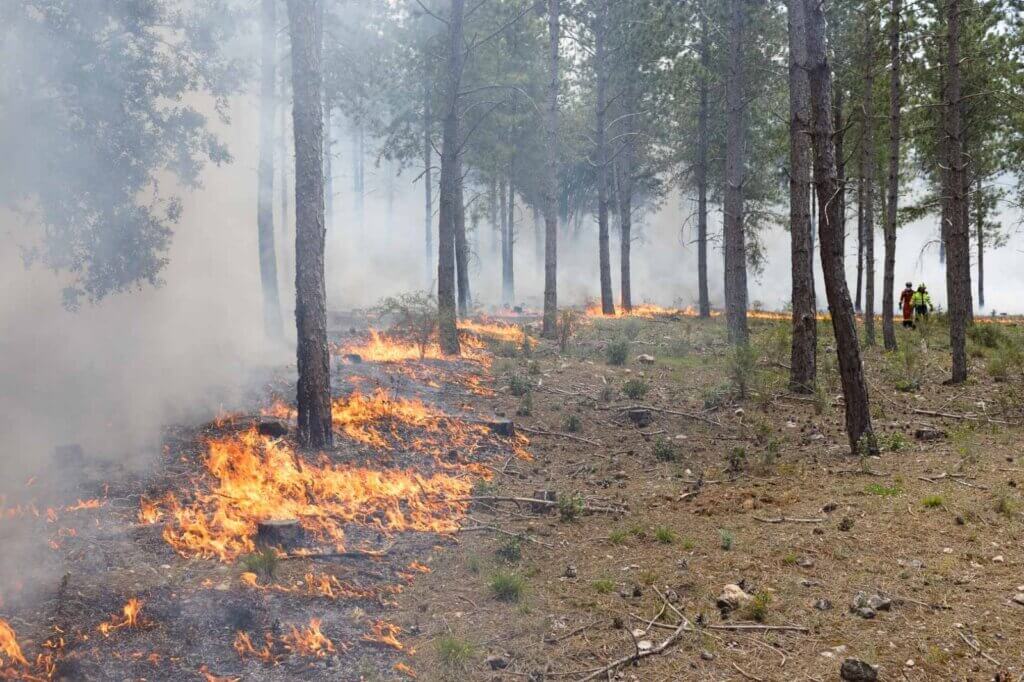
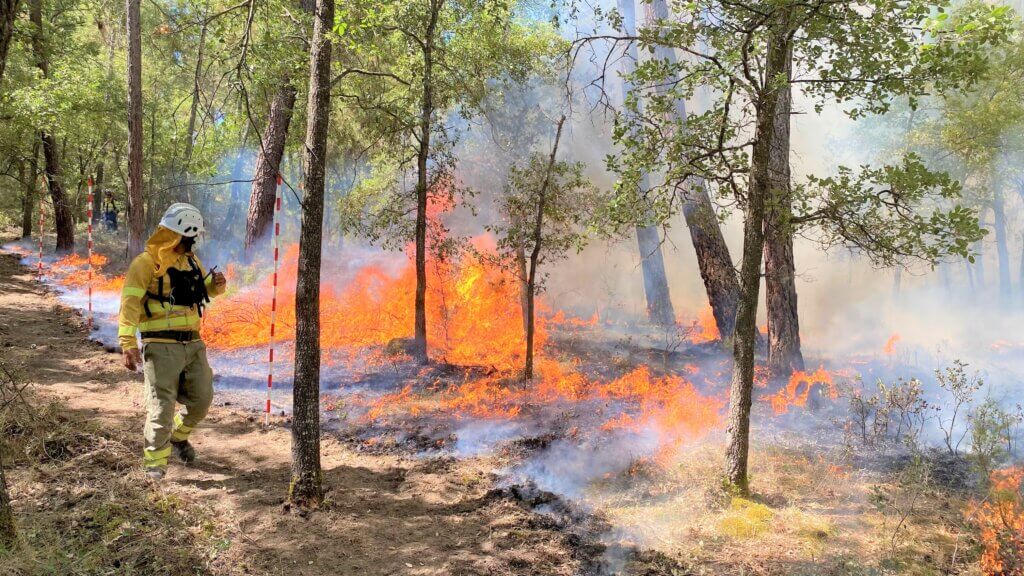
Photo by José Almodóvar.
It is worth mentioning that research centers in forest sciences played a fundamental role in the implementation of prescribed burning. Excellent collaborations between science and techniques such as the joint participation and collaboration of firefighting and scientific organizations in projects such as FIREPARADOX, GEPRIF, CILIFO or VIS4FIRE, allowed the introduction of prescribed burning in a wide range of places and, simultaneously, to conduct further research on this topic.
The gradual implementation of prescribed burning as a tool for management has led to a generalization and technification of the use of fire as a fire suppression tool. This advance has been given by the improved fire behavior knowledge and capacities gained through prescribed burns, thus becoming the best training for fire suppression.
In Spain, each autonomous region has regulatory agency for forestry issues. Even though the bureaucracy required to conduct prescribed burning varies for each region, in general terms, this activity always requires authorization from the regulatory body. In the regions where the prescribed burn is conducted by the same agency that authorizes the burn, the bureaucracy and the implementation of the burn are generally better. However, in regions where the authorization is given by a different agency, the process is generally slower and more complex. In any case, it is a fact that in places where the prescribed burning techniques are well consolidated, the bureaucratic steps to obtain authorization work well no matter the complexity of the process.
When prescribed burns take place in natural protected sites such as national or natural parks, additional authorization is often required; this extra step often complicates the process.
n most Spanish regions, prescribed burns are executed exclusively by public services, often the same agencies that oversee wildfire suppression. Following the good practices developed by neighboring Portugal, opening the implementation of the burns to the private sector is considered a necessary step in the future. Another needed practice is the consideration of prescribed burning as a sylvicultural tool that can be implemented independently from the type of land ownership. To achieve this goal, a system will need to be set up to certify the competencies for planning, coordinating, and executing burns.
Basic technical recommendations for the implementation of prescribed burns exist at a national level. Those are approved by the Comité Nacional de PRESCRIBED BURNING 20 wildfire | OCTOBER – DECEMBER 2022 Lucha contra Incendios Forestales as a common framework for the management of prescribed burns. The recommendations specify the essential knowledge that participants in a prescribed burn should have, as well as safety measures. Other than that, the training for planning, co-ordinating and participating in burns depends on each region. Thus, the responsible agency from each region has trained its staff internally.
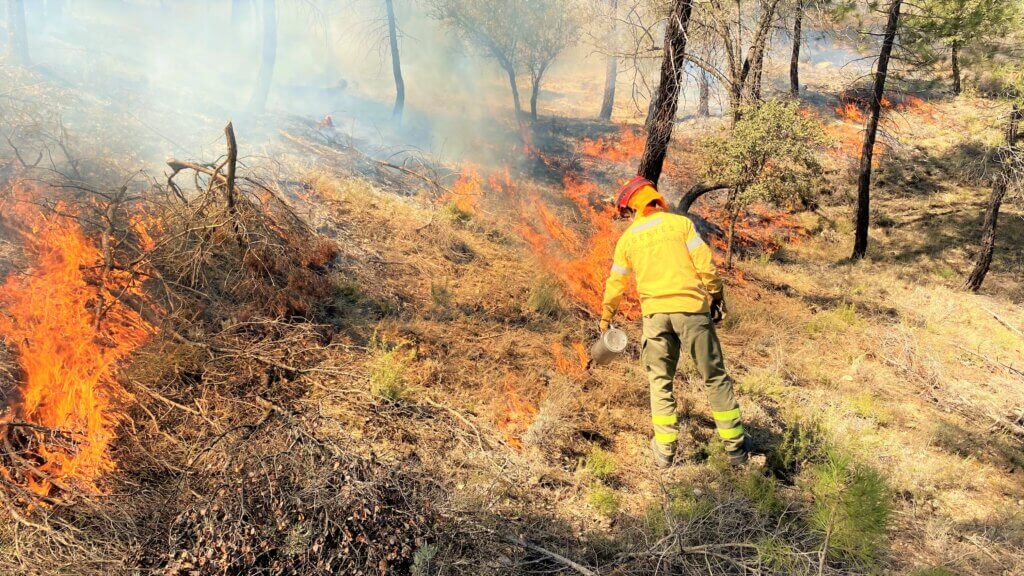
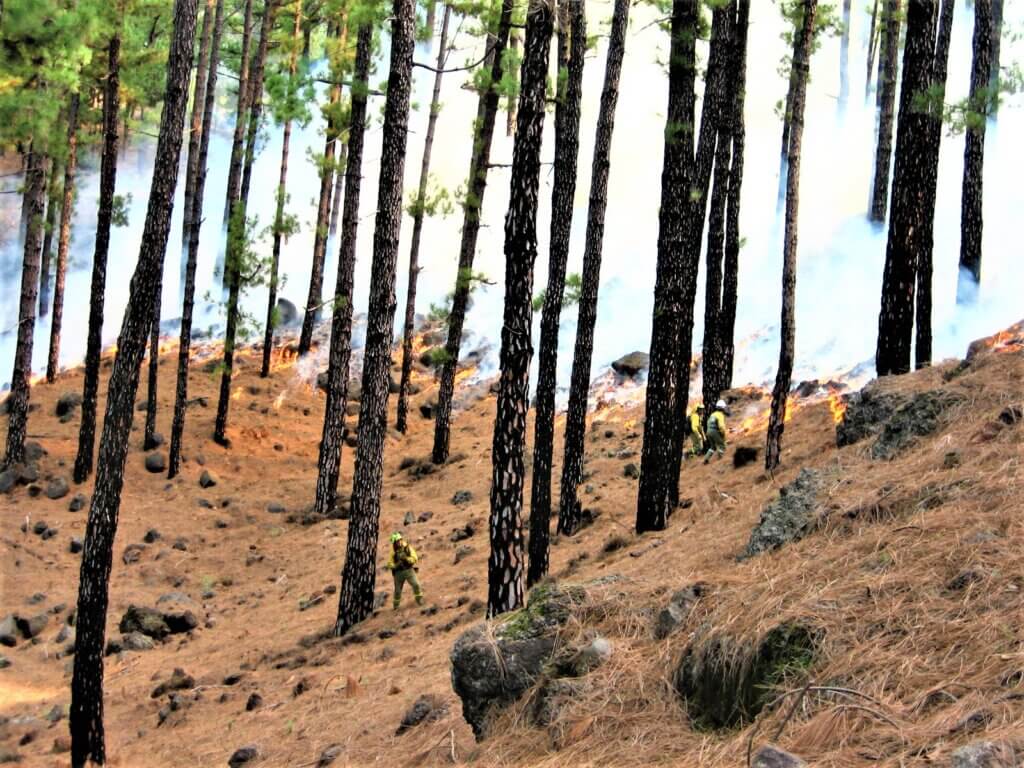
Prescribed fires started as a pilot in the 1990s and the 2000s in Spain, but it was not until the 2010s that implementation and growth expanded. At present, Spain is in a stage of consolidation and integration of prescribed burns into the fire prevention and mitigation strategies of the different agencies. As an example, the large CastillaLa Mancha region in the centre of Spain is committed to developing prescribed burning techniques and steadily increasing the number of hectares managed each year.
Acknowledgements: Nuria Prat, Juan Caamaño, Juanjo Fernández and Javier Madrigal for their contributions and comments.
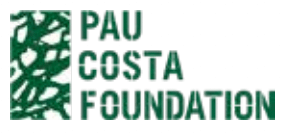
ABOUT THE AUTHOR
Jose Almodovar is a forestry engineer and a wildfire manager. He works for the Forest Fire Service in Castilla-La Mancha, a region in the center of Spain where he has been an incident commander for wildfires for more than 20 years. He is also involved in the prescribed burning planning and training in the region and a member of the Pau Costa Foundation.
